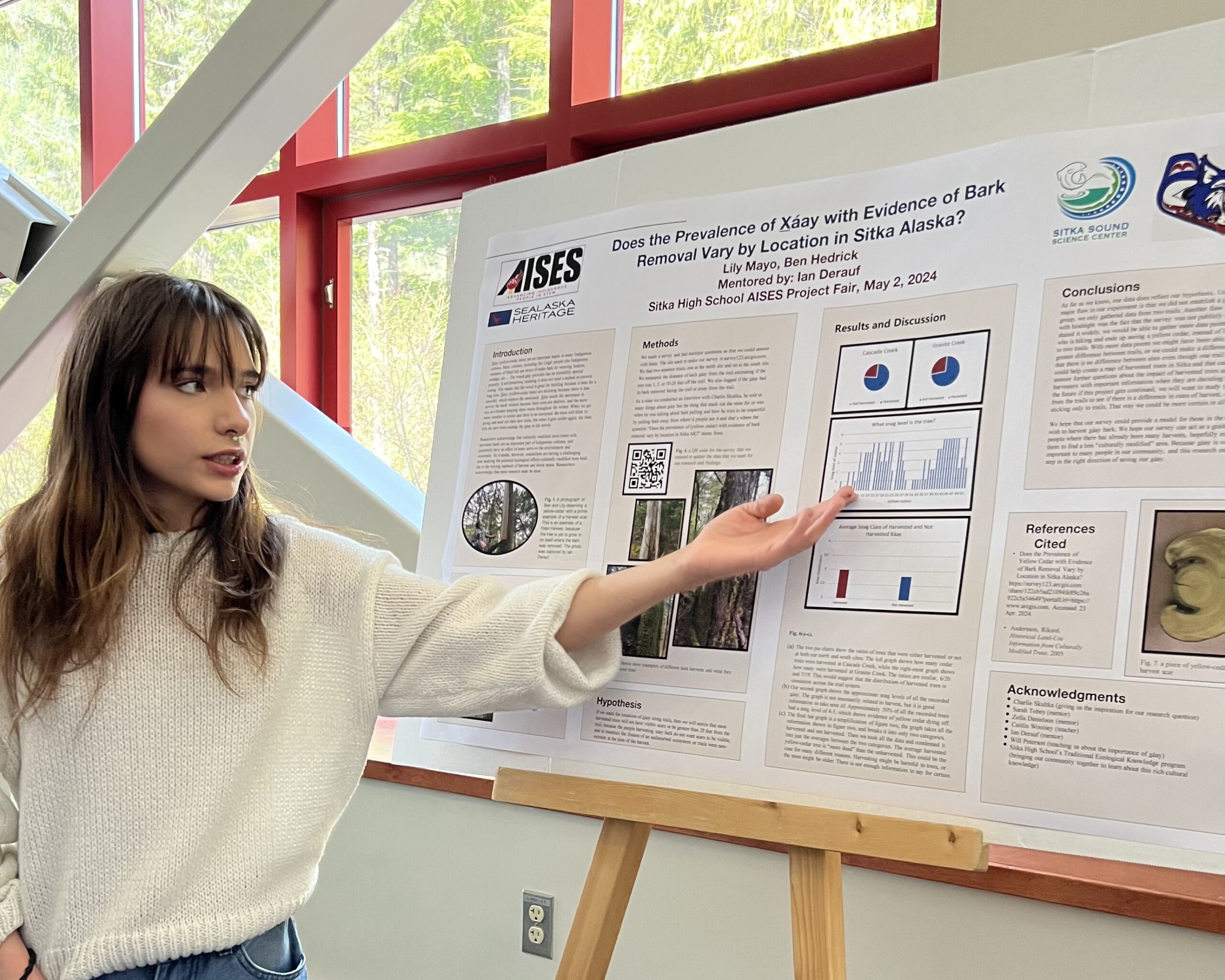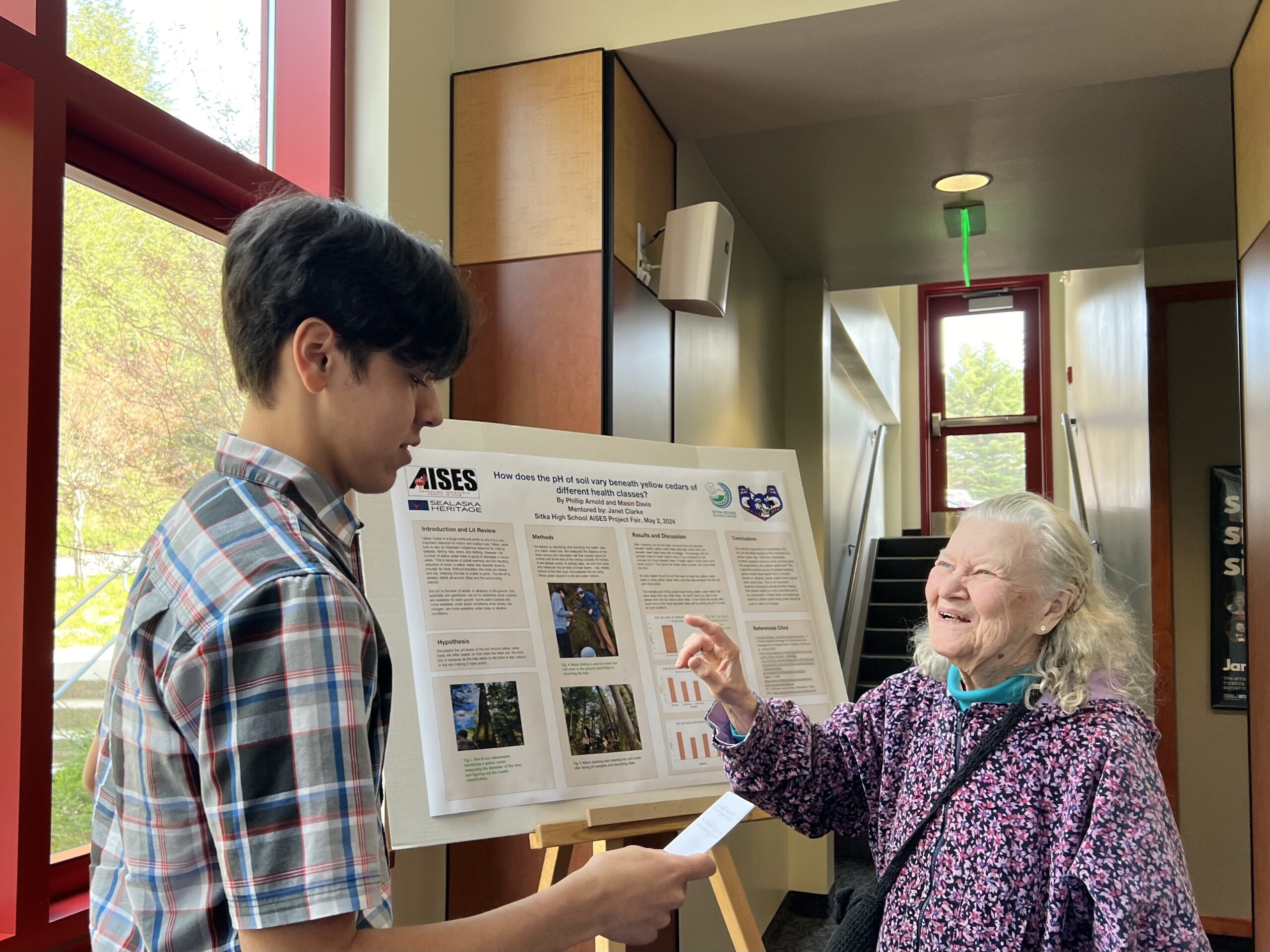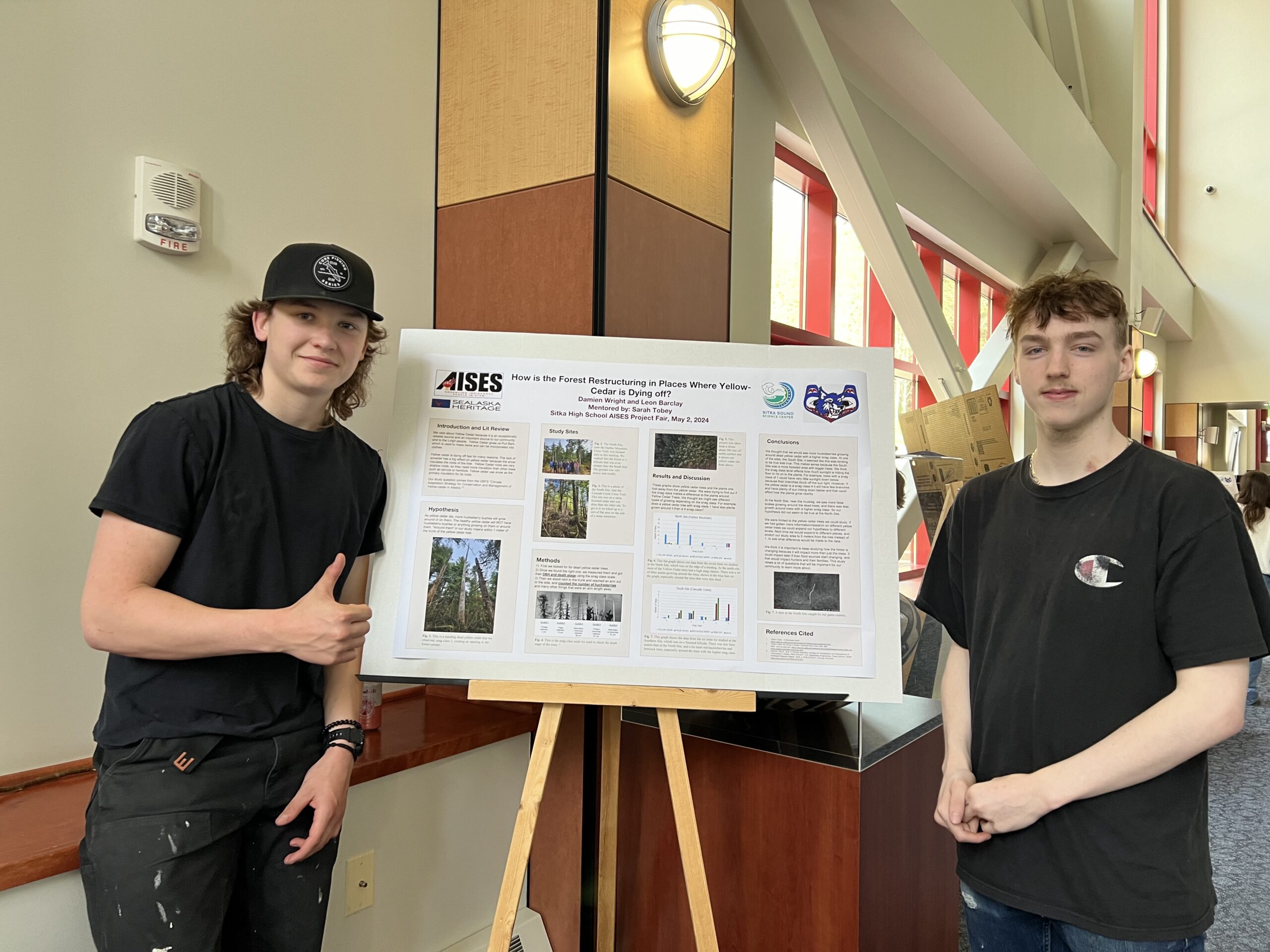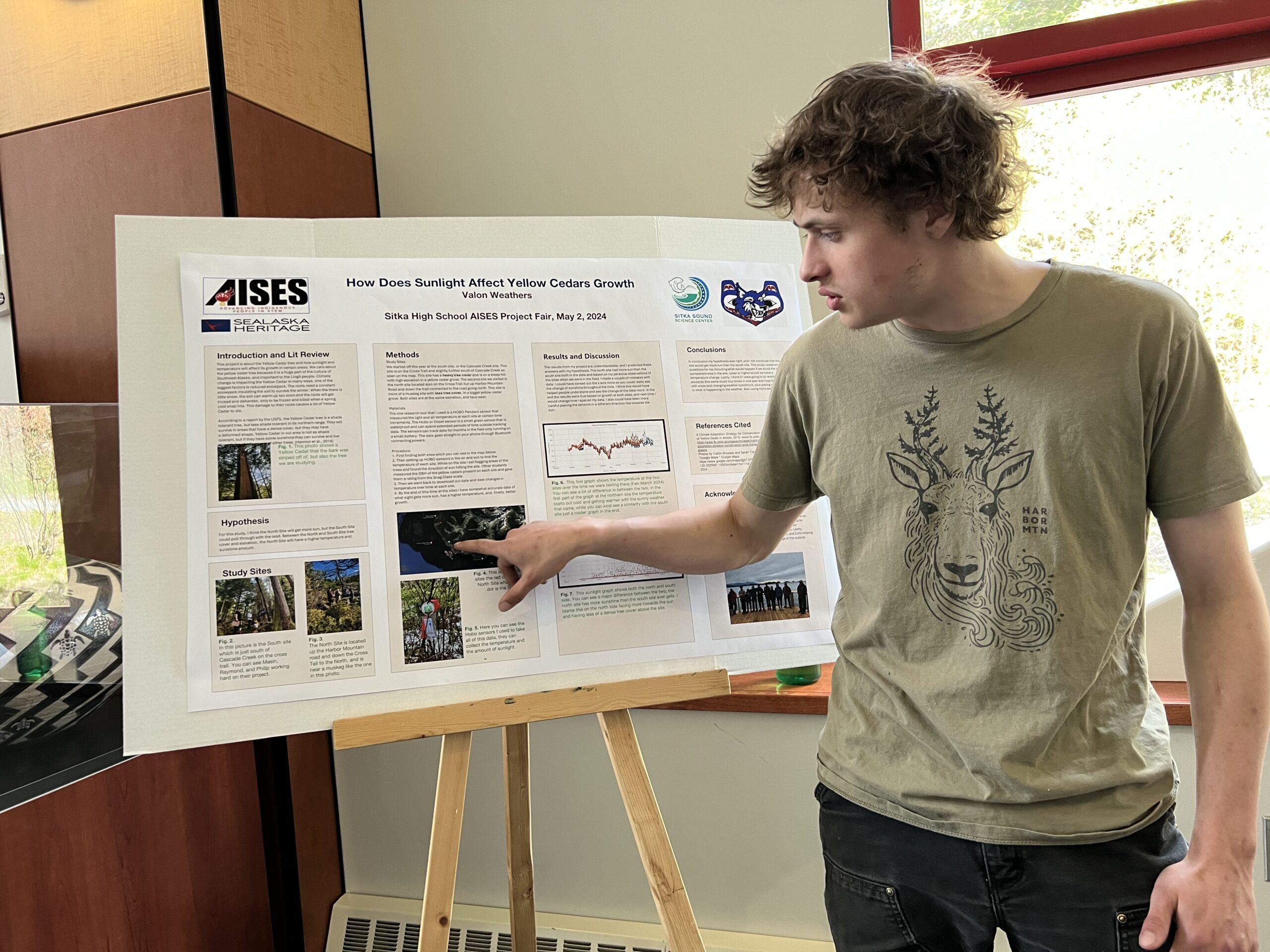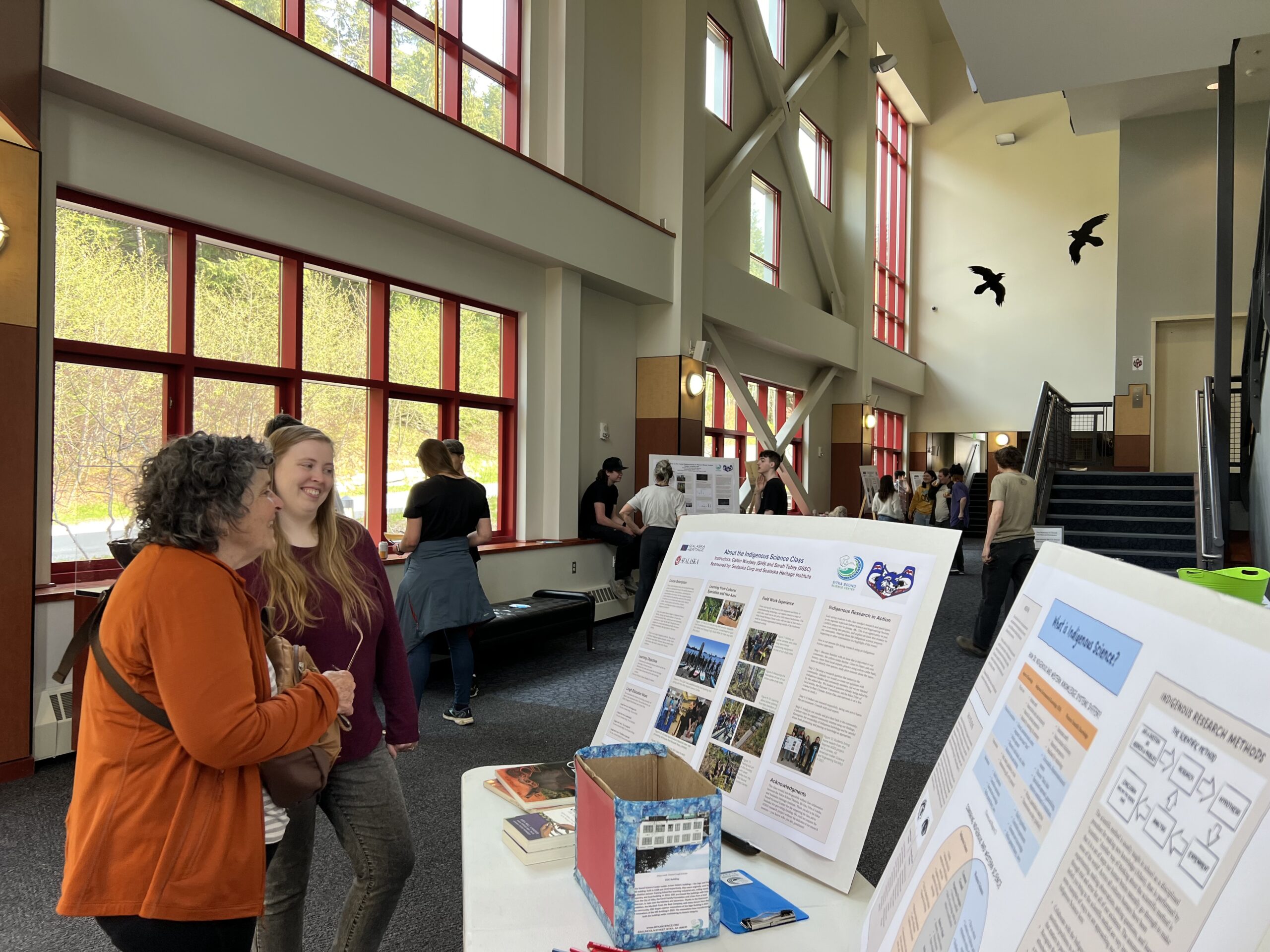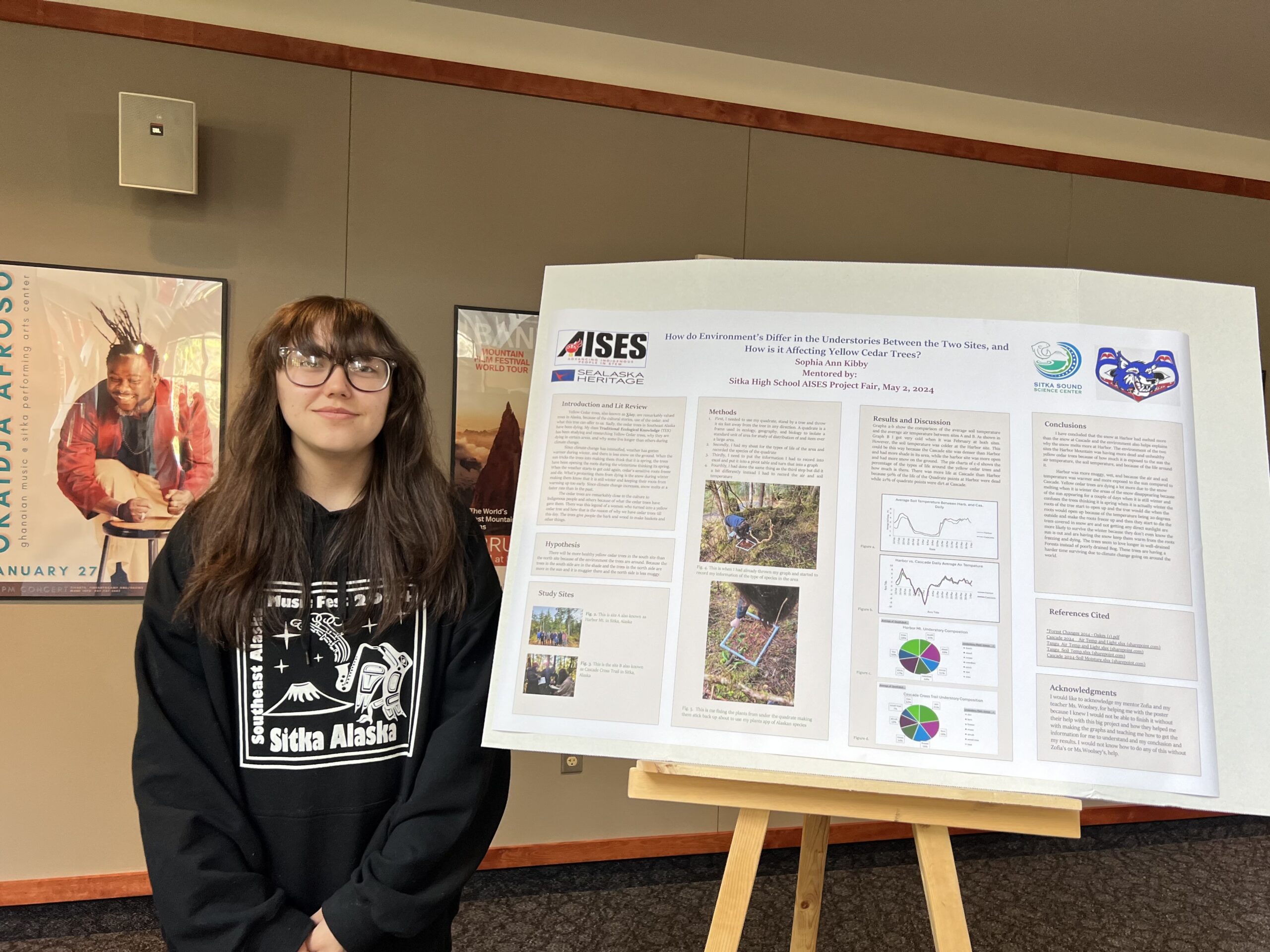
News, Education, Featured
News, Education, Featured
News, Education, Featured
Listening to Xáay Community-Driven Research by Students
For the past two years, our staff has been honored to assist Sitka High School science teacher Caitlin Woolsey with the Traditional Ecological Knowledge (TEK) science class. During class students learn about the scientific knowledge held and developed by Indigenous peoples and traditional practices. In recent years western scientific institutions have begun to realize how vital diverse ways of knowing are to understanding our world, a noteworthy example being the National Science Foundation’s recent commitment to put $30 million towards centers for Indigenous science, read more at Science.org.
This growing practice of incorporating western scientific methods with Indigenous wisdom has become popularized through the writing of Robin Wall Kimmerer in her book Braiding Sweetgrass, excerpts of which are used in the TEK class. A main takeaway from the book is how to approach scientific inquiry using both Indigenous and western knowledge perspectives, a practice sometimes called “two-eyed seeing”. The TEK class conducts research projects centered around Xáay (Yellow Cedar) driven by community concern about the species decline in Southeast Alaska. The students interview community members, develop research questions, design methods, analyze data, and then tell the story of their projects to the community. Lily Mayo and Ben Hedrick took 1st place in this year’s regional AISES (Advancing Indigenous People in STEM) presentations for their question of, Does the Prevalence of Xáay with Evidence of Bark Removal Vary by Location in Sitka Alaska?. The award comes with an invitation to present their project on the national stage next fall. Sophia Kibby also took home a prize, her project was recognized by the Wooch Yax Award for community wellbeing. All of the students expressed growth in ideas and awareness both of the tree’s importance within the natural and social environments as well as the importance of incorporating Indigenous wisdom into scientific research.
“Science and traditional knowledge may ask different questions and speak different languages, but they may converge when both truly listen to the plants.” (Kimmerer, Braiding Sweetgrass, pg 165)
The Sitka Sound Science Center is extremely grateful for our role of mentoring students and contributing to these lessons alongside Ms. Woolsey. Our support of the Traditional Ecological Knowledge class is made possible by generous donations from Sealaska Corporation.
